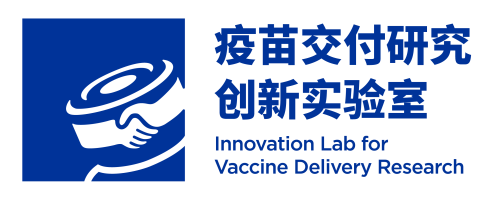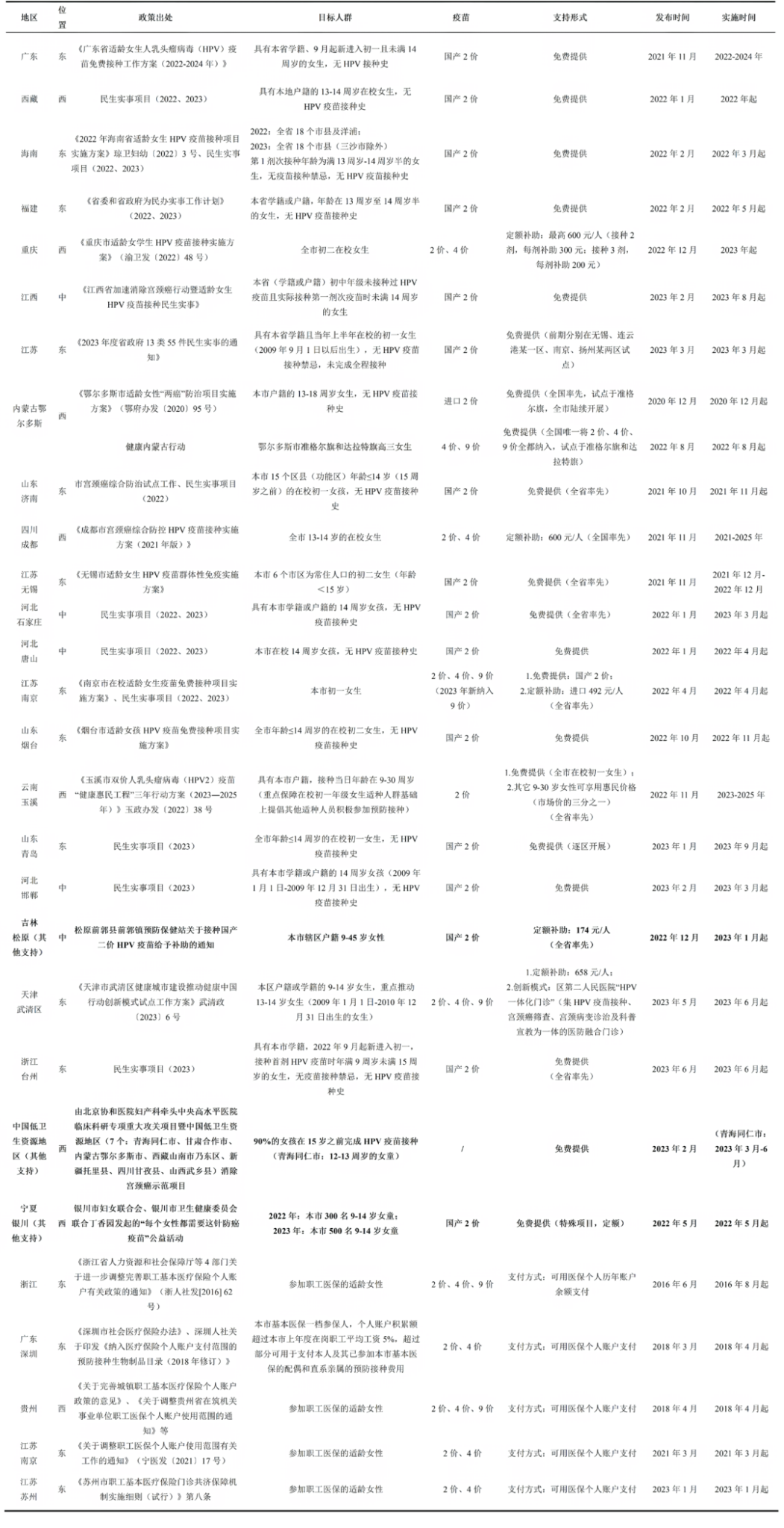Two Sessions Proposal
01
National People’s Congress (NPC) Representative Li Xia: Accelerating the Inclusion of the HPV Vaccine in the National Immunization Program
Representative Li Xia proposed actively promoting the dynamic expansion of vaccines included in the National Immunization Program (NIP). Within the next one to two years, priority should be given to incorporating HPV and Hib vaccines into the NIP to ensure broader accessibility for women and children, particularly those in remote and economically disadvantaged areas. (Source: The Paper)
02
NPC Representative Jiang Lingfeng: Enhance the Timely Payment Collection of Non-NIP Vaccines
Jiang Lingfeng, NPC representative and Vice Chairman and President of Zhifei Biological, submitted several proposals at this year’s NPC session, focusing on the biopharmaceutical industry. Regarding the initiative to “enhance the timely payment collection of non-NIP vaccines and facilitate the sustainable development of the vaccine industry,” Jiang suggested resolving historical arrears through specialized debt financing and optimizing the Center for Disease Control and Prevention (CDC) payment system. He also recommended establishing a “direct fund transfer” mechanism to effectively alleviate financial pressures of vaccine manufacturers . (Source: Jiemian News)
Journal Article Recommandation
01
Optimizing influenza vaccine allocation: A predictive analytics approach for informed public health planning
This article was published in American Journal of Health-System Pharmacy, aimed to use predictive analytics to determine the influenza vaccine quantities that would be needed for the next influenza season while minimizing vaccine waste and meeting patient care demands. In the U.S., the traditional way of ordering influenza vaccines relies on historical ordering data, making it difficult to accurately predict demand, a challenge further exacerbated by fluctuating public acceptance of the vaccine, especially in the post–coronavirus disease 2019 (COVID-19) era. The process to produce influenza vaccine takes 6 to 8 months and needs to be booked six months in advance, placing additional pressure on healthcare providers in terms of logistical management and resource allocation. In this study, predictive modeling is used to improve ordering accuracy and ensure that vaccine supply matches actual demand, which reduces both cost and waste and the public health risks associated with supply shortages.
The study retrospectively analyzed vaccination data from the past 4 influenza seasons from multiple regions of Mayo Clinic, including electronic health (EHR) documentation, nursing records, and inventory information. The analysis revealed that approximately 68% of quadrivalent influenza vaccines (QIV) and 85% of high-dose vaccines (HD) were completed between August and November each year. Based on this timing pattern, the team developed a prediction algorithm that focused on two key parameters: the proportion of early vaccinations (August-November) and the demand adjustment factor for the remaining quarter. The model also considered vaccine package sizes and refrigerator space constraints to optimize logistics management. To validate the model’s effectiveness, the study selected two regions of the Mayo Clinic (regions 3 and 5) as the experimental group to order vaccines using the new algorithm; the other three regions followed the traditional model as the control group. The experimental group voluntarily adjusted the predicted value downward by 10% at the time of ordering to comply with the supplier’s return policy while retaining room for contingency adjustments.
The results showed that the prediction model demonstrated significant advantages by comparing the actual data with the measured results for the 2023-2024 influenza season. The number of doses of QIV ordered for Regions 3 and 5 were 17,574 and 9,164, respectively, and the final actual number of doses administered were 15,902 and 9,016, respectively, with an error rate of less than 10%. The new strategy resulted in more than $1 million in cost savings compared to the traditional approach, while avoiding the risk of vaccine shortages. The study also found that higher doses of vaccine were more accurately predicted for demand, possibly related to greater vaccination stability in the elderly population.
The study suggests that compared to the traditional ordering method, ordering using predictive analytics allowed the team to more accurately determine future order volumes and spend, yielding significant cost savings.
https://doi.org/10.1093/ajhp/zxae336
02
Ten proposed measures to improve vaccination: Health care providers’ perspectives on promoting the vaccination intake of children with special healthcare needs in China
This study, authored by Zeng Mei, Huang Zhuoying, et al., was published in BMJ Paediatrics Open and aims to address the common issues of delayed or missed vaccinations among Children with Special Healthcare Needs (CSHCN) in China. The study proposes ten recommendations to optimize vaccination services, improve immunization coverage for CSHCN, and lay the groundwork for advancing immunization policies for this population. Using a cross-sectional qualitative research approach, the study interviewed 21 healthcare professionals from Shanghai, China, including vaccination clinic physicians from community health service centers, pediatric specialists from children’s hospitals, vaccine evaluation clinic physicians, and immunization program managers from the Centers for Disease Control and Prevention (CDC). The research team explored participants’ practical experiences regarding the challenges and barriers to immunizing CSHCN, assessed the gaps between the current vaccination services and patient demand, and gathered suggestions on improving immunization implementation for CSHCN.
10 measures were proposed to promote routine immunisation for children with special needs: (1) using immunisation advisory clinics to provide vaccination services for CSHCN; (2) establishing a referral network and specifying which cases necessitate referral to advisory clinics; (3) using an interconnected information system to identify, document and follow-up the CSHCN; (4) supporting high-quality clinical research to update immunisation protocols; (5) providing clear and definite immunisation recommendations to parents of eligible CSHCN; (6) seeking immunisation advice from specialised professionals to enhance primary care capability; (7) creating quality improvement programmes; (8) considering immunisation status a mandatory assessment during specialist visits; (9) supporting off-label use of vaccines legally and (10) encouraging pharmaceutical companies to update vaccine package inserts.
The study highlights the urgent need to increase vaccination coverage among CSHCN in China by establishing standardized vaccine evaluation clinics, a structured referral network, and tailored immunization protocols. The National Immunization Program (NIP) should refine its implementation guidelines and leverage regional CDCs to enhance the training of primary healthcare workers. Additionally, quality control and continuous improvement mechanisms should be developed and implemented to ensure standardized and accessible vaccination services. Furthermore, the study emphasizes that through systematic reforms and multi-stakeholder collaboration, efforts should be made to optimize communication between healthcare providers and families, streamline referral processes, and strengthen quality oversight. These strategies aim to create a more inclusive immunization system, ensuring that CSHCN receive the same level of immunization protection as healthy children, ultimately reducing their risk of infectious diseases and severe complications.
Children with Special Healthcare Needs (CSHCN) typically refer to children requiring long-term medical care or related services due to chronic illnesses, developmental disorders, congenital abnormalities, or other health conditions. Due to their unique physiological and pathological conditions, CSHCN often face delays or omissions in vaccine administration, leading to significantly lower NIP vaccine coverage rates compared to their healthy peers.
https://doi.org/10.1136/bmjpo-2024-002797
03
Increasing child vaccination coverage can reduce influenza cases across age groups: An agent-based modeling study
This article was published in The Journal of infection. In September 2024, the U.S. Food and Drug Administration (FDA) approved caregiver administration of Live Attenuated Influenza Vaccine (LAIV), which setting offers an opportunity to increase influenza vaccine coverage (VC) of children. The study aims to explore whether the availability of the LAIV can facilitate expanding influenza vaccination coverage and improving convenience beyond traditional healthcare settings. The study utilized an agent-based model—the Framework for Reproducing Epidemiological Dynamics (FRED)—to simulate the impact of increasing vaccination rates among school-aged children aged 5–17 in the U.S. by 5% to 15% on influenza cases and hospitalization rates across different age groups.
Results showed that for every 5% increase in vaccination rates among school-aged children, influenza cases decreased by 3.2% among children and by 3.3% in the overall population. If vaccination rates increased by 15%, the reduction in influenza cases could reach 10.9% among children and 11.6% in the overall population. Extrapolated to the total U.S. population, this corresponds to a reduction of 1.9 million to 5.9 million influenza cases annually, with the greatest benefits observed among adults aged 65 and older. Despite the relatively high vaccination rates in this age group, herd immunity established through increased vaccination among children could reduce annual hospitalizations by up to 23,258 cases. The study further revealed two key mechanisms driving this outcome: first, children act as primary vectors for influenza transmission, and enhancing their immunity effectively disrupts transmission chains; second, the trivalent LAIV (LAIV3) formulation may provide higher protection compared to the quadrivalent LAIV (LAIV4) formulation. Simulation data indicated that even without increasing vaccination rates, optimizing vaccine formulations alone could reduce influenza cases among school-aged children by 7.5% and lower overall influenza cases by 7.3%.
The study highlights that increasing influenza vaccination coverage among school-aged children, particularly through the use of LAIV, which can be administered by caregivers, significantly reduces the risk of influenza infection and hospitalization across the entire population. These findings underscore the amplification effect of technological innovations—such as more convenient vaccination methods and optimized vaccine formulations—in disease prevention, providing valuable scientific evid ence to inform public health policy decisions.
Agent-based modeling(ABM):ABM plays a critical role in the study of complex systems, allowing researchers to investigate how interactions between individuals collectively lead to group-level and system-level behaviors.
https://doi.org/10.1016/j.jinf.2025.106443
04
Navigating the ‘sea of Cs’ in vaccine hesitancy: Where does collaboration fit?
This commentary article, published in Vaccine, systematically discussed the causes of vaccine hesitancy and strategies to address it, emphasizing the critical role of healthcare providers, interdisciplinary teams, and community collaboration in promoting vaccination uptake.
Vaccine hesitancy, defined as the “delay in acceptance or refusal of vaccines despite availability of vaccination services” was recognized by the World Health Organization (WHO) as one of the leading threats to global health in January 2019. The spread of misinformation and disinformation during the COVID-19 pandemic exacerbated a crisis of public trust in science and the healthcare system. What has stayed unchanged, however, is that healthcare providers remain the most trusted source of vaccine information and are therefore, through their interactions with their patients, at the forefront of addressing vaccine hesitancy. Studies have shown that for many initially hesitant parents who ultimately chose to vaccinate their children, the decisive factor was the information and professional advice provided by healthcare providers. Furthermore, the COVID-19 pandemic increased public awareness about risks associated with vaccine preventable diseases, making patients more attentive to the ingredients, safety, and effectiveness of vaccines prior to immunisation, further underscoring the communication responsibilities of healthcare providers in the informed consent process.
In the past decade, numerous models have been developed to describe influences on vaccine hesitancy and attempt to simplify a complex problem , beginning with the WHO’s Complacency, Convenience and Confidence (“3Cs”) Model of Vaccine Hesitancy in 2014. Betsch and colleagues further developed the model and added Calculation and Collective Responsibility in 2018 to create the 5C Psychological Antecedents of Vaccination. Recognizing the unique context of the COVID-19 pandemic on willingness to be vaccinated, Conspiracy and Compliance were added by Geiger and colleagues in 2021, resulting in the 7Cs of Vaccination Readiness. While these models effectively reveal the individual, systemic, and societal factors contributing to vaccine hesitancy, they remain insufficient in guiding healthcare providers in implementing specific intervention strategies, such as optimizing provider-patient communication and enhancing patient confidence.
Studies suggest that among all factors influencing vaccine hesitancy, “collaboration” is likely the most influential core element, as it simultaneously fosters trust, reduces complacency, and optimizes individual decision-making. Collaboration between healthcare providers and patients is essential, and the Shared Decision-Making (SDM) model allows healthcare professionals to provide scientific evidence while respecting patients’ values, enabling them to make vaccine decisions that they perceive as acceptable. This approach not only improves vaccination rates but also enhances trust. Compared to generalized health education, personalized vaccine counseling has been shown to be more effective.
Moreover, interdisciplinary collaboration is a critical strategy for supporting vaccination uptake. Coordinated efforts among healthcare professionals (physicians, nurses, pharmacists, etc.) in providing vaccination services can optimize vaccine management, integrate immunization records, and ensure consistent communication of safety and efficacy information, thereby reducing misinformation and increasing public confidence. At the community level, collaboration is equally important, as it enhances collective responsibility to mitigate vaccine hesitancy while improving accessibility. For example, empowering community leaders to disseminate vaccine knowledge and implementing school-based immunization programs or mobile vaccination clinics can effectively reduce vaccination barriers and expand coverage.
Addressing vaccine hesitancy requires an “all-hands-on-deck” approach, where healthcare institutions, interdisciplinary teams, and communities work collaboratively to optimize vaccine communication and service delivery. This integrated approach will help build a more resilient immunisation system, ultimately increasing vaccination uptake and advancing global public health goals.
https://doi.org/10.1016/j.vaccine.2025.126876
Content Editor: Ziqi Liu
Page Editor: Ziqi Liu





